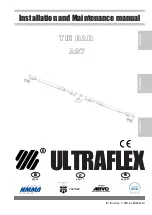
Chapter 3
Configuration and Default Settings
3-8
www.ni.com
Figure 3-3.
Power-on Self Configuration Status
The EEPROM is divided into two halves—one half is factory configured
and one half is user configurable. Use switch S1 to control the operation
of the EEPROM. The setting of this switch determines whether the
VXIpc 870 Series boots off the factory-configured half or the
user-modified settings. In its default setting, the VXIpc 870 Series
boots off the user-configurable half.
This switch is useful in the event that the user-configured half of the
EEPROM becomes corrupted in such a way that the VXIpc 870 Series
boots to an unusable state. By altering this switch setting, you can return to
the factory configuration and get up and running again. Use the procedure
as described in the following section,
How to Fix an Invalid EEPROM
Configuration
.
Figure 3-4 shows the configuration settings for EEPROM operation.
Figure 3-4.
EEPROM Configuration
How to Fix an Invalid EEPROM Configuration
Use T&M Explorer under Windows NT/9
x
to edit the configuration of the
VXIpc 870 Series. Some of these settings are stored in files that are read
by the NI-VXI software, while other settings are stored directly in the
VXIpc 870 Series EEPROM.
Certain EEPROM configurations, including invalid configurations, can
lock up your computer while it is booting up. Generally, only the size and
location of the memory windows can cause your VXIpc 870 Series to lock
up your system. For example, many PCI-based computers will not boot if a
a. VXI Circuitry Loads Power-on
Defaults from EEPROM (Default)
b. Power-on Self Configuration
Circuit is Disabled
S2
S2
a. Boot from User
Configuration (Default)
b. Boot from Protected
Configuration
S1
S1















































